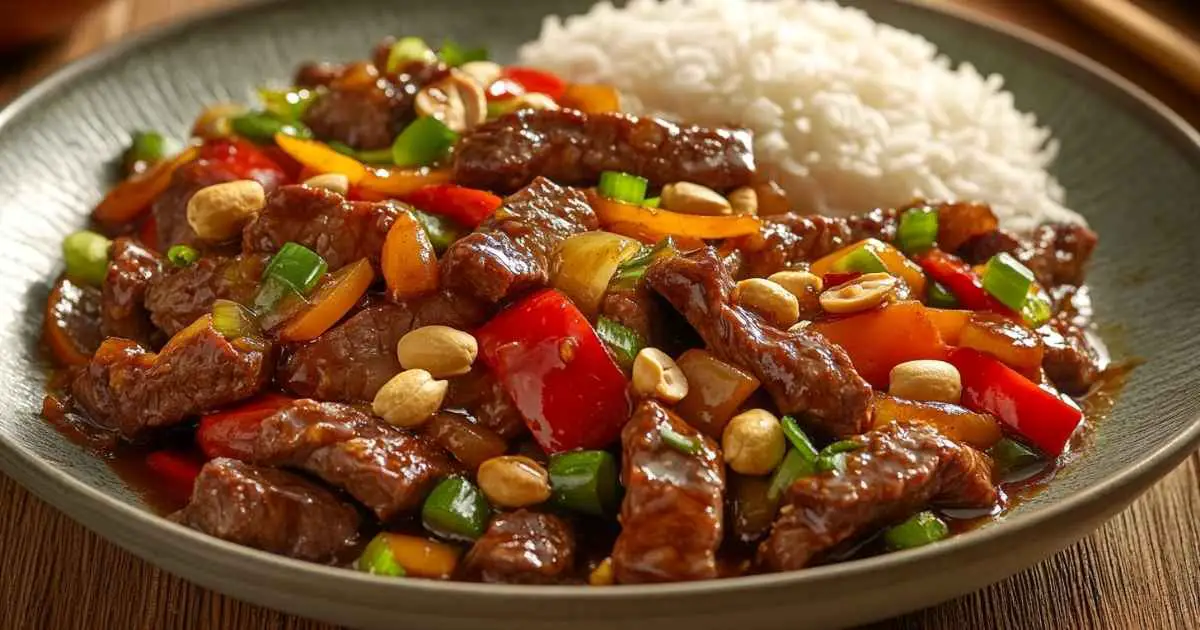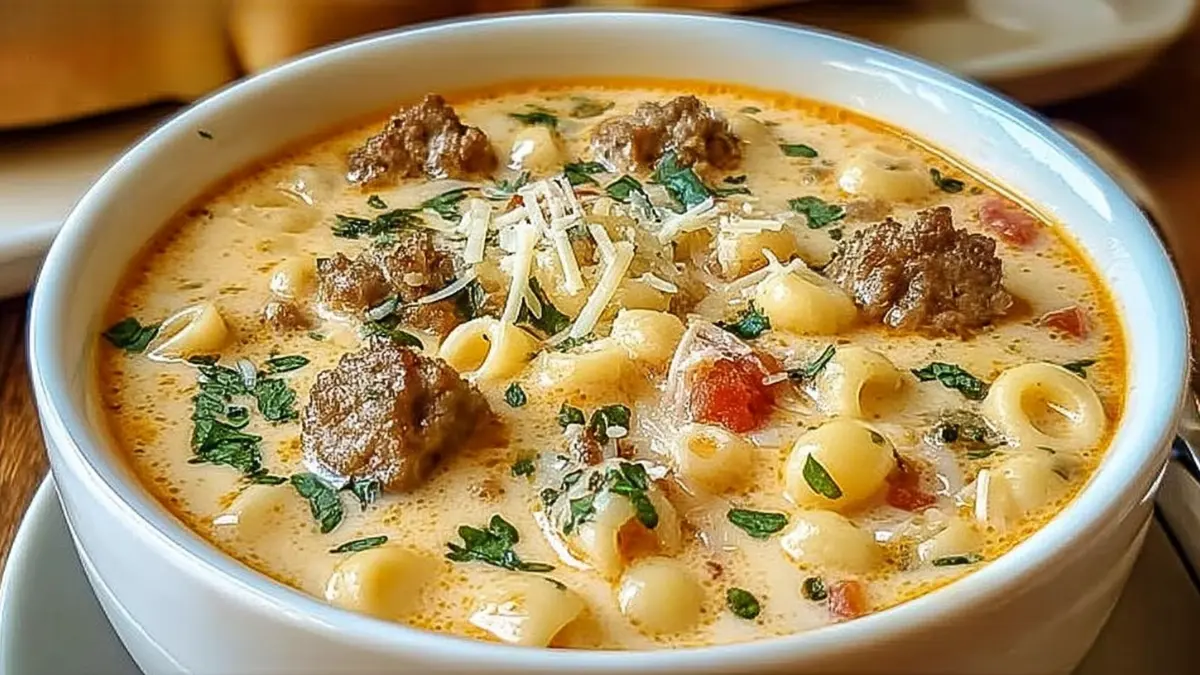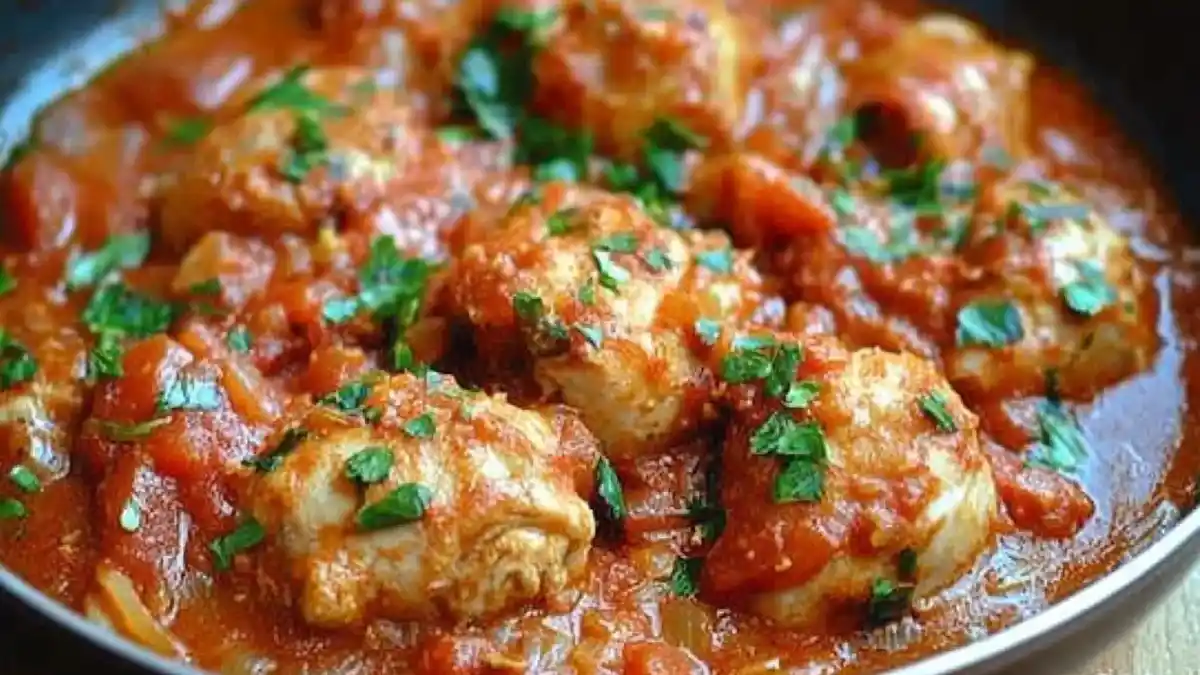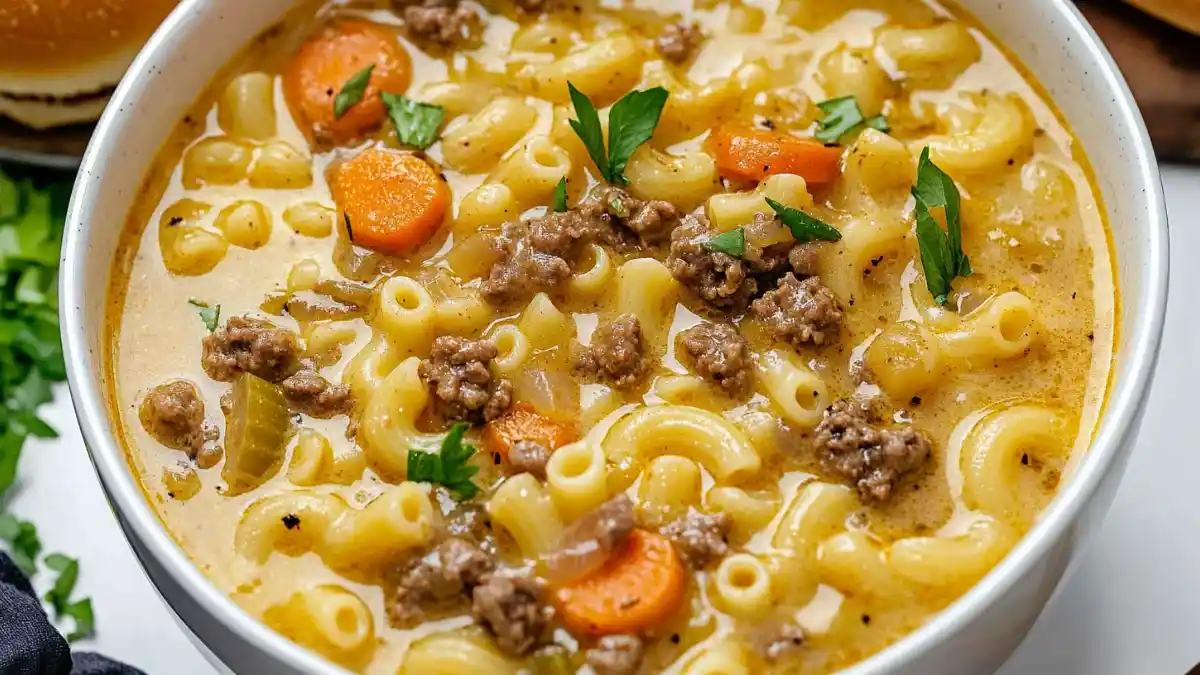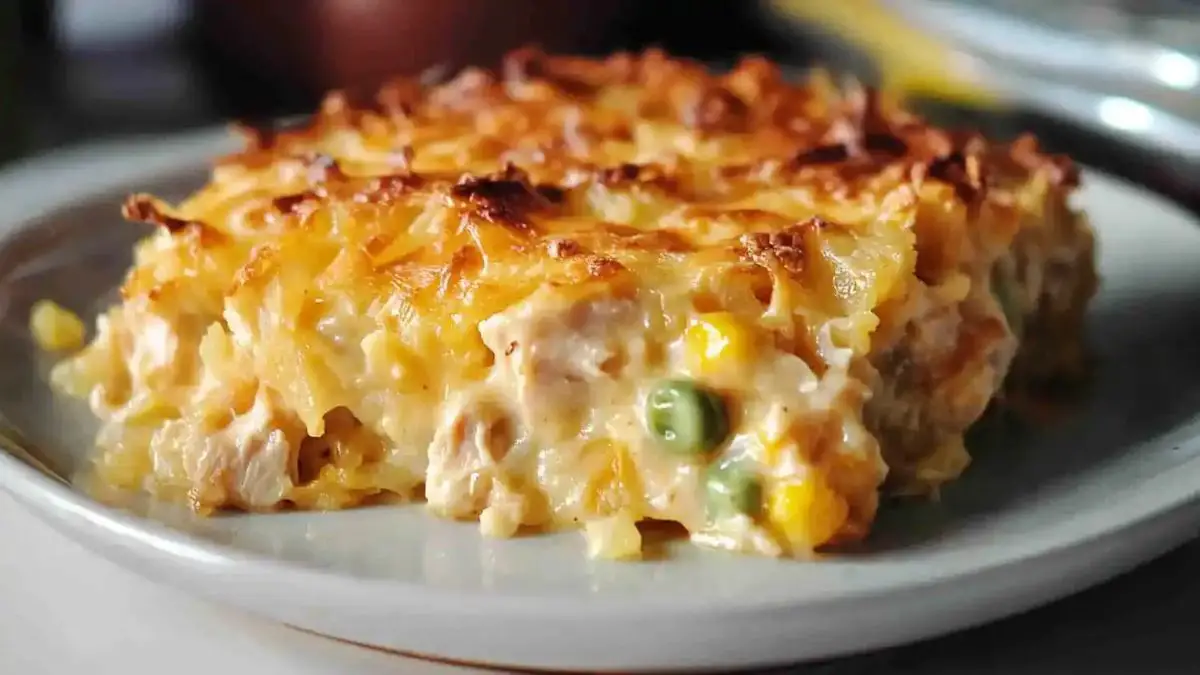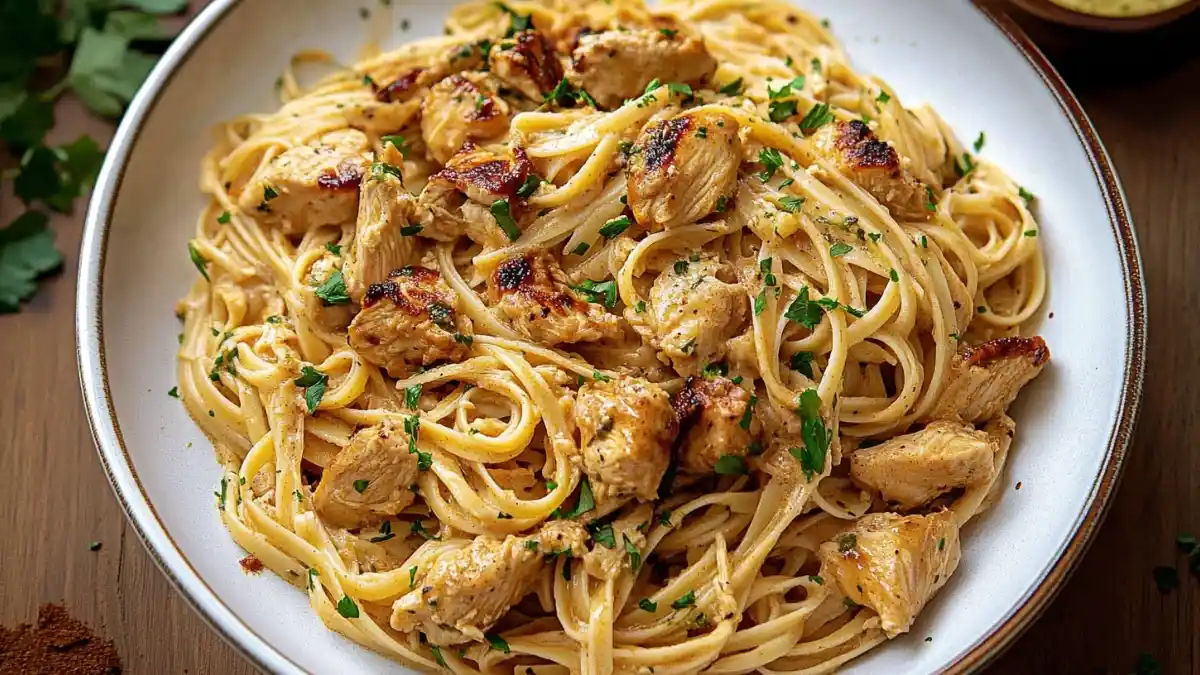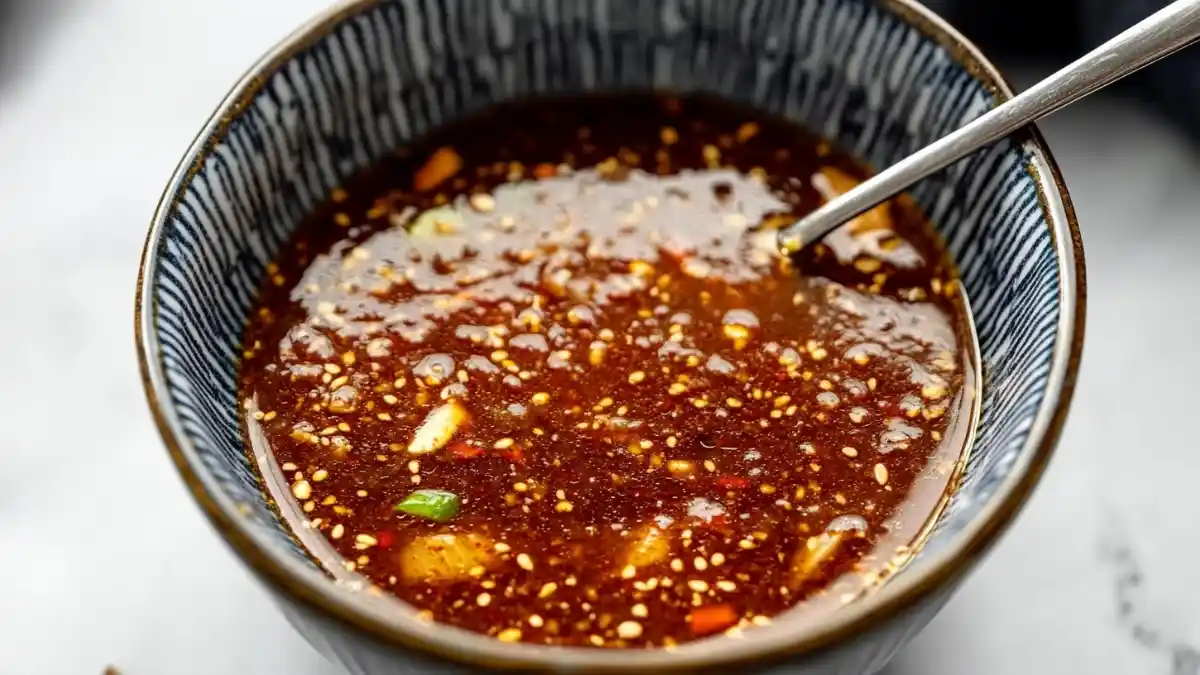Kung Pao Beef is a dish that delivers a blend of sweet, spicy, and savory notes. Many people enjoy it at restaurants, but you can create a delicious homemade version at your own pace. This recipe involves tender beef, crisp vegetables, peanuts, and a sauce that brings a slightly sweet kick. You can customize the level of heat by adjusting the red pepper content. A hot wok, or a sturdy pan, is your partner in bringing out the smoky tones that define the dish.
Cooking Kung Pao Beef may seem like an exciting activity. You do not need advanced training or special tools. You just need the right ingredients, an eagerness to learn, and a clear plan. The method revolves around simple steps and fresh flavors. Kung Pao Beef fits well into busy schedules, and it also works for celebrations where you want to present something memorable.
Why You’ll Love This Recipe
This Kung Pao Beef recipe offers a balance of crisp peppers, tender beef, crunchy peanuts, and a sauce that hits both sweet and spicy notes. The dish pairs well with rice, noodles, or even roasted vegetables. You can enjoy it on a quiet night or add it to a fun gathering menu.
You may love this recipe because it gives you control over all elements. You get to decide how spicy or sweet the sauce is. You can select your preferred cut of beef or use extra vegetables if you want to increase freshness. The outcome is a dish that adapts to your tastes and dietary considerations. Cooking at home also means you can use quality ingredients. That freedom helps ensure the dish is free of additives you do not want.
The steps are straightforward. The ingredients are widely available at grocery stores. You can serve your Kung Pao Beef as a main course or as part of a larger spread with other side dishes and salads. This recipe has a warm flair that makes it a fitting choice for both everyday meals and special get-togethers.
Ingredients
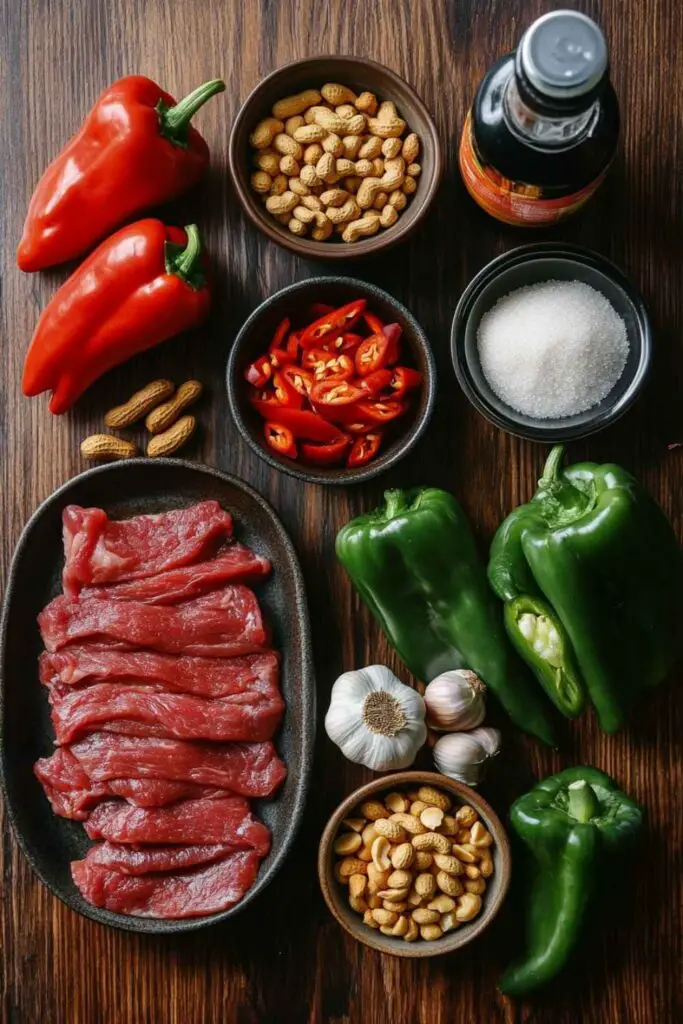
In this section, we focus on the elements that give Kung Pao Beef its signature taste and texture. Each ingredient has a purpose, whether it contributes warmth, sweetness, or a hint of crunch.
Below is a list of suggested items:
- Beef (1 pound/450 grams)
- You can pick flank steak, sirloin, or a similar cut. Look for a lean option with minimal fat. Cut it into thin strips for quick cooking. Thin, uniform strips help the beef cook evenly and maintain tenderness.
- Bell Peppers (2 medium, diced)
- Use red or green bell peppers, or combine both to add color variety. These peppers bring a sweet taste and a crunchy texture.
- Onion (1 medium, diced)
- A white or yellow onion works well. Onion layers add aroma and bring a gentle sweetness to the dish.
- Garlic (3-4 cloves, minced)
- Garlic lifts the savory elements of the recipe and provides a pungent kick. Fresh garlic is key to a bold taste.
- Fresh Ginger (1 tablespoon, minced)
- Ginger offers a citrus-like spark and complements the heat from chili peppers.
- Dried Red Chiles or Crushed Red Pepper (2-3 whole dried chiles or 1 teaspoon crushed pepper flakes)
- These add the punchy kick. Adjust the quantity based on your heat tolerance. If you prefer a mild dish, use fewer peppers.
- Peanuts (¼ cup, unsalted or lightly salted)
- The crunchy peanuts are a trademark of this dish. Roast them lightly to enhance their nutty flavor.
- Green Onions (2 stalks, sliced, optional)
- These add a bright garnish and a hint of freshness. You can sprinkle them on top before serving.
- Oil (3 tablespoons for stir-frying)
- A neutral oil like vegetable or canola is best for high-heat cooking. Sesame oil is another choice, but it has a stronger aroma.
- Cornstarch (2 tablespoons)
- Cornstarch is used to coat the beef and thicken the sauce. It also helps lock in moisture during cooking.
- Soy Sauce (4 tablespoons, divided)
- This provides the savory base. Consider low-sodium soy sauce if you want to control salt.
- Brown Sugar (1 tablespoon)
- This adds a subtle sweetness to the sauce and helps balance the heat.
- Rice Vinegar or White Vinegar (1 tablespoon)
- Vinegar creates a tangy edge that brightens the sauce.
- Chicken or Beef Broth (¼ cup)
- A splash of broth rounds out the sauce. You can use water if you do not have broth.
- Optional Extras
- Feel free to add diced zucchini, carrots, or mushrooms if you like extra vegetables.
Kung Pao Beef stands out as a spicy stir-fry that combines bold sauce with tender protein. The fresh vegetables and aromatic spices make it a must-try option for fans of Chinese-inspired cuisine.
How to Make Kung Pao Beef Recipe
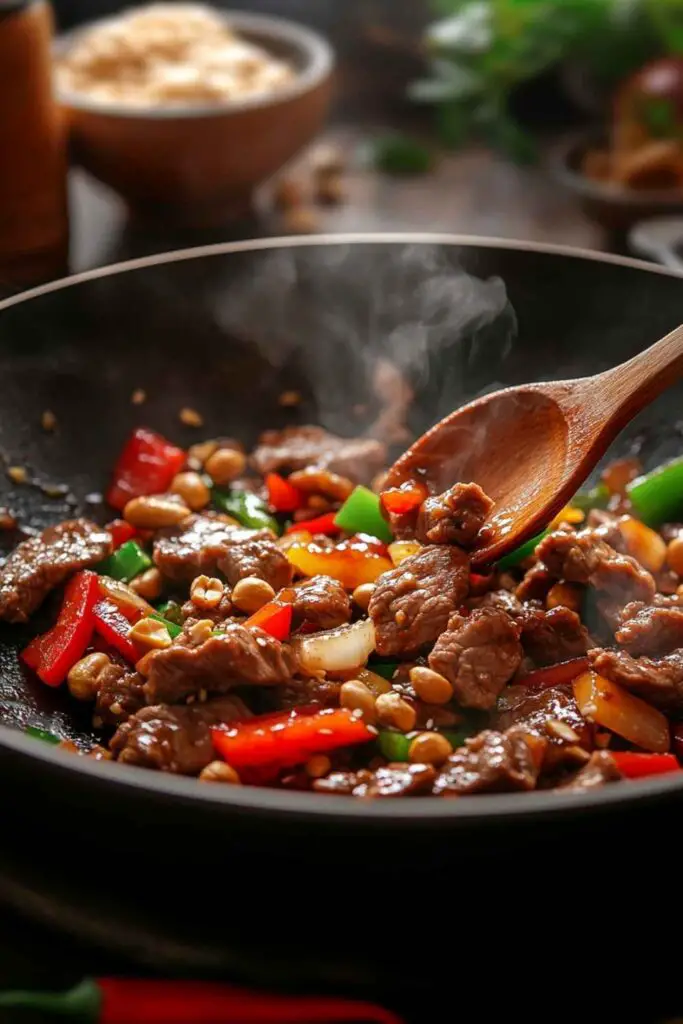
This section provides a step-by-step guide. Feel free to adjust small details as needed, such as the spice level or the thickness of the sauce. Each step aims to help you manage cooking times and flavors in a clear order.
Step 1: Marinate the Beef
- Prepare the Marinade
- Take a bowl and add 2 tablespoons of soy sauce and 1 tablespoon of cornstarch. Stir until smooth. If you like, add a pinch of crushed red pepper for extra heat.
- Coat the Beef
- Place the beef strips in the marinade. Gently mix to ensure each piece gets covered. Let this sit for about 15 minutes. This short marinade period helps the beef stay juicy during cooking.
Step 2: Stir-Fry the Beef
- Warm the Pan
- Heat 2 tablespoons of oil in a wok or large skillet over medium-high heat. A hot surface is key for a proper stir-fry.
- Cook the Beef
- Add the marinated beef strips. Spread them out so they have contact with the hot surface. Let them sear for a minute before you stir. Searing locks in flavor and helps achieve a nice color. Stir-fry the beef for about 3-4 minutes, or until it is lightly browned but not fully cooked through.
- Remove the Beef
- Transfer the partially cooked beef to a plate. You will finish cooking it later with the sauce. This process prevents overcooking the meat.
Step 3: Stir-Fry Vegetables and Aromatics
- Add More Oil
- In the same wok or skillet, add the remaining tablespoon of oil if needed. Heat again over medium-high heat.
- Garlic, Ginger, and Dried Chiles
- Place the minced garlic, minced ginger, and dried red chiles or crushed red pepper into the hot oil. Stir them for about 30 seconds. Keep an eye on the garlic so it does not burn. This step releases bold aromatics.
- Add the Vegetables
- Add the diced onion and bell peppers. Stir-fry for about 3-5 minutes, or until they begin to soften. If you want them to retain more crunch, reduce the cooking time slightly.
Step 4: Create the Sauce
- Combine Sauce Ingredients
- In a small bowl, mix 2 tablespoons of soy sauce, 1 tablespoon of brown sugar, 1 tablespoon of vinegar, and ¼ cup of broth. Stir until the sugar dissolves.
- Thicken with Cornstarch
- In a separate small dish, dissolve the remaining 1 tablespoon of cornstarch in a bit of water. This creates a smooth paste that you will add to the sauce.
Step 5: Bring Everything Together
- Return Beef to the Pan
- Put the beef back into the wok with the vegetables. Stir to combine all items.
- Pour in the Sauce
- Add the sauce mixture and stir to coat the beef and vegetables. Let this simmer for about 1-2 minutes.
- Add the Cornstarch Slurry
- Gradually stir in the cornstarch slurry. You will see the sauce start to thicken. If it becomes too thick, add a splash of water or broth.
- Taste Test and Adjust
- Sample the sauce. If you need more saltiness, add a drop of soy sauce. If you want extra sweetness, add a bit of brown sugar. If you crave extra heat, sprinkle in more red pepper.
Step 6: Final Touches
- Add Peanuts
- Stir in the peanuts. Let them warm in the sauce for about a minute. They will retain their crunch but blend into the savory and spicy flavors.
- Garnish
- If you have green onions, scatter them on top. This adds color and a mild onion scent.
- Check Consistency
- Ensure the beef is fully cooked and the vegetables have the texture you like. If everything meets your preference, turn off the heat.
With these steps, your Kung Pao Beef is ready. The dish should feature a thick, shiny sauce coating tender strips of beef and vibrant peppers.
Serving and Storage Tips
Serving Suggestions
- Rice or Noodles
- Serve Kung Pao Beef on a bed of steamed rice or noodles. The sauce pairs well with these starches, and they help balance the heat.
- Vegetable Sides
- If you want more variety, consider steamed broccoli, stir-fried bok choy, or a light cucumber salad. These add extra color and texture.
- Family-Style Meals
- Kung Pao Beef fits a family-style spread. Place the dish in the center of the table so everyone can serve themselves. You can also pair it with other Chinese-inspired dishes.
Storage Advice
- Refrigeration
- Let the dish cool to room temperature, then transfer leftovers to an airtight container. You can store it in the refrigerator for up to three days.
- Reheating
- Warm leftovers in a skillet over medium heat. Add a splash of water or broth to loosen the sauce if it looks too thick. Stir often to avoid scorching.
- Freezing
- You can freeze the cooked beef and vegetables for up to one month. Store the food in a freezer-safe container, and thaw it in the fridge before reheating. Keep in mind that the peppers may lose some of their crisp texture after freezing. This guide provides comprehensive information on safe freezing practices, including the impact of freezing on nutrient retention and recommended storage times. Freezing and Food Safety
Tips for Best Flavor upon Reheating
- Separate Storage
- If possible, keep the sauce separate from the meat and vegetables. This idea helps preserve crisp textures.
- Keep the Heat High
- A quick reheat over high heat in a skillet helps refresh the flavors and texture. Avoid microwaving if you can, since that can produce a rubbery texture in the beef.
- Add Fresh Garnishes
- Toss in fresh peanuts or green onions. This step revives the bright look and taste of the original dish.
Helpful Notes
Adapting for Different Spice Levels
Kung Pao Beef is often spicy, but you have the freedom to adjust. If you want a milder version, reduce or skip the dried chilies and rely on a small amount of red pepper flakes. If you crave extra heat, you can add fresh chili peppers or a touch of chili paste. Tinkering with spice levels lets you personalize the dish and keeps it approachable for people who do not usually enjoy intense heat.
Using Other Cuts of Beef
You can pick from various cuts based on price and availability. Flank steak is a popular choice because it remains tender if sliced against the grain. Sirloin is another solid choice with good flavor. If you choose a cut that is leaner, be sure to coat it well in marinade. That layer helps keep in moisture. If you find a cut that is a bit more marbled with fat, it can provide extra flavor. Keep an eye on the cooking time to prevent dryness.
Substitutions for Key Ingredients
- Soy Sauce: You can use tamari or coconut aminos if you want a gluten-free or alternative option.
- Brown Sugar: Honey or a small amount of white sugar can work if you do not have brown sugar. Adjust amounts to match your preferred sweetness.
- Vinegar: You can use apple cider vinegar or even lemon juice if you lack rice vinegar. Each adds a tangy lift.
- Peanuts: If you have a peanut allergy, swap them with toasted cashews or omit them altogether. You can sprinkle toasted sesame seeds instead for added texture.
Cooking Methods
- Wok vs. Skillet
A wok makes stir-frying easier, but a large non-stick skillet or cast-iron pan also does the job. High heat is key to producing the desirable sear. - Batch Cooking
If you have a small pan, cook the beef in batches. Crowding the pan can lead to steaming instead of frying. - Stir-Fry Timing
The order you add ingredients influences the final texture. Harder vegetables go in first. Aromatics, such as ginger and garlic, often go in earlier to release flavor, but watch the heat so they do not burn.
Avoiding Overcooking
Overcooking the beef can happen quickly in a hot pan. If you see the meat beginning to lose moisture or stiffen, turn down the heat. You can also remove the beef and add it back later, as described in the steps. This approach helps keep a juicy finish.
Health Considerations
Kung Pao Beef provides protein from beef, nutrients from vegetables, and healthy fats from peanuts. If you want a lighter meal, use less oil or try a leaner cut of beef. Some people use extra vegetables to boost fiber content and reduce the overall calorie load per serving. Adjust these details based on your health goals.
Flavor Variation Ideas
- Extra Garlic and Ginger
- For a sharp taste, double the garlic and ginger. This approach intensifies the dish and is great for fans of strong aromatics.
- Sweet and Sour Twist
- Add a tablespoon of ketchup or a bit of fresh pineapple for a sweet tang. This variation changes the taste but keeps the core idea of Kung Pao Beef.
- Thai-Inspired
- Use Thai chili peppers and add a sprinkle of fresh basil. This approach merges influences while keeping the stir-fry method intact.
- Cilantro Garnish
- If you like cilantro, you can chop a handful of leaves and sprinkle them on top for a fresh finish.
Making It a One-Pan Meal
Kung Pao Beef can become a one-pan meal if you add cooked noodles or steamed rice directly into the wok near the end. Stir them in to coat with sauce. This method can be helpful if you want to cut down on dishes. Take care to adjust the sauce quantity so it coats all elements without turning gummy.
Conclusion
Kung Pao Beef offers a colorful, spicy experience that can suit many occasions. It blends marinated beef, vegetables, and peanuts in a sauce that is both warm and a bit sweet. You have the flexibility to make it mild, moderate, or fiery. It is easy to pair with rice, noodles, or other side dishes, so it can adapt to your weekly dinner plan or a weekend treat.
Cooking this dish can be a simple and fun exercise. The steps are practical and do not require many specialized techniques. Everything unfolds quickly once you start stir-frying, so prepare and measure your ingredients in advance. When the aromatic steam rises from your skillet, you will see how all the elements come together. With these guidelines, you can produce a flavorful, eye-catching meal. Serve it fresh, or store the leftovers for a future craving.
________________________________
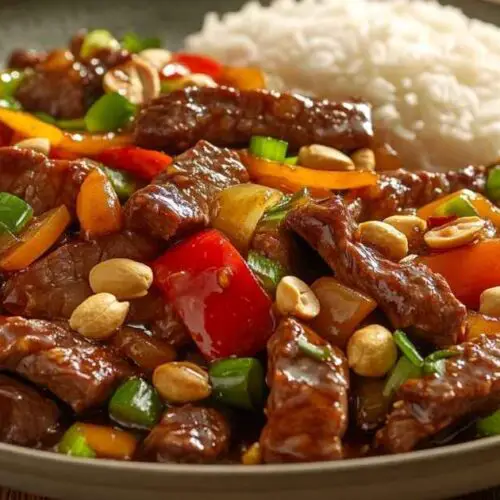
Kung Pao Beef Recipe
Ingredients
Beef (1 pound/450 grams)
Bell Peppers (2 medium, diced)
Onion (1 medium, diced)
Garlic (3-4 cloves, minced)
Fresh Ginger (1 tablespoon, minced)
Dried Red Chiles or Crushed Red Pepper (2-3 whole dried chiles or 1 teaspoon crushed pepper flakes)
Peanuts (¼ cup, unsalted or lightly salted)
Green Onions (2 stalks, sliced, optional)
Oil (3 tablespoons for stir-frying)
Cornstarch (2 tablespoons)
Soy Sauce (4 tablespoons, divided)
Brown Sugar (1 tablespoon)
Rice Vinegar or White Vinegar (1 tablespoon)
Chicken or Beef Broth (¼ cup)
Optional Extras
- Feel free to add diced zucchini carrots, or mushrooms if you like extra vegetables.
Instructions
Step 1: Marinate the Beef
- Prepare the Marinade:Take a bowl and add 2 tablespoons of soy sauce and 1 tablespoon of cornstarch. Stir until smooth. If you like, add a pinch of crushed red pepper for extra heat.
- Coat the Beef:Place the beef strips in the marinade. Gently mix to ensure each piece gets covered. Let this sit for about 15 minutes. This short marinade period helps the beef stay juicy during cooking.
Step 2: Stir-Fry the Beef
- Warm the Pan:Heat 2 tablespoons of oil in a wok or large skillet over medium-high heat. A hot surface is key for a proper stir-fry.
- Cook the Beef:Add the marinated beef strips. Spread them out so they have contact with the hot surface. Let them sear for a minute before you stir. Searing locks in flavor and helps achieve a nice color. Stir-fry the beef for about 3-4 minutes, or until it is lightly browned but not fully cooked through.
- Remove the Beef:Transfer the partially cooked beef to a plate. You will finish cooking it later with the sauce. This process prevents overcooking the meat.
Step 3: Stir-Fry Vegetables and Aromatics
- Add More Oil:In the same wok or skillet, add the remaining tablespoon of oil if needed. Heat again over medium-high heat.
- Garlic, Ginger, and Dried Chiles:Place the minced garlic, minced ginger, and dried red chiles or crushed red pepper into the hot oil. Stir them for about 30 seconds. Keep an eye on the garlic so it does not burn. This step releases bold aromatics.
- Add the Vegetables:Add the diced onion and bell peppers. Stir-fry for about 3-5 minutes, or until they begin to soften. If you want them to retain more crunch, reduce the cooking time slightly.
Step 4: Create the Sauce
- Combine Sauce Ingredients:In a small bowl, mix 2 tablespoons of soy sauce, 1 tablespoon of brown sugar, 1 tablespoon of vinegar, and ¼ cup of broth. Stir until the sugar dissolves.
- Thicken with Cornstarch:In a separate small dish, dissolve the remaining 1 tablespoon of cornstarch in a bit of water. This creates a smooth paste that you will add to the sauce.
Step 5: Bring Everything Together
- Return Beef to the Pan:Put the beef back into the wok with the vegetables. Stir to combine all items.
- Pour in the Sauce:Add the sauce mixture and stir to coat the beef and vegetables. Let this simmer for about 1-2 minutes.
- Add the Cornstarch Slurry:Gradually stir in the cornstarch slurry. You will see the sauce start to thicken. If it becomes too thick, add a splash of water or broth.
- Taste Test and Adjust:Sample the sauce. If you need more saltiness, add a drop of soy sauce. If you want extra sweetness, add a bit of brown sugar. If you crave extra heat, sprinkle in more red pepper.
Step 6: Final Touches
- Add Peanuts:Stir in the peanuts. Let them warm in the sauce for about a minute. They will retain their crunch but blend into the savory and spicy flavors.
- Garnish:If you have green onions, scatter them on top. This adds color and a mild onion scent.
- Check Consistency:Ensure the beef is fully cooked and the vegetables have the texture you like. If everything meets your preference, turn off the heat.
Notes
- Calories: 350 kcal
- Protein: 28g
- Fat: 15g
- Saturated Fat: 3g
- Carbohydrates: 22g
- Dietary Fiber: 3g
- Sugars: 8g
- Cholesterol: 75mg
- Sodium: 850mg
Explore More Delicious Recipes
If you enjoyed diving into the Kung Pao Beef Recipe, why not explore more delightful dishes from our collection? Here are some must-try recipes to elevate your cooking adventures:
- Beef and Broccoli Recipe: A quick and savory stir-fry perfect for busy weeknights.
- Galena Chicken Recipe: A flavorful and juicy chicken dish that’s sure to impress.
- Burger Bowl Recipe: A low-carb twist on the classic burger with all the toppings you love.
- Pastalaya Recipe: A Cajun-inspired pasta dish full of bold and smoky flavors.
- Taco Lasagna Recipe: Layers of taco goodness in a fun and cheesy casserole.
- Smoked Meatloaf Recipe: A smoky take on the classic meatloaf, packed with flavor.
Explore these recipes today to bring more exciting flavors to your table and make every meal memorable!
FAQs
1. What Is Kung Pao Beef Made Of?
Kung Pao Beef is a stir-fry dish featuring marinated beef strips, bell peppers, onions, peanuts, and a spicy-savory sauce. It often includes garlic, ginger, dried chili peppers, and a touch of sweetness from sugar or honey. This blend of ingredients creates a balance of bold flavors that appeal to fans of spicy cuisine.
2. What Does Kung Pao Beef Taste Like?
Kung Pao Beef offers a combination of spicy, savory, and lightly sweet flavors. The sauce usually blends chili peppers, soy sauce, vinegar, and a hint of sugar. Peanuts add a crunchy contrast, while fresh aromatics, such as garlic and ginger, enhance the dish’s overall taste.
3. Is Kung Pao Beef Very Spicy?
Kung Pao Beef can be quite spicy, but the heat level is flexible. Many home cooks and restaurants adjust the chili pepper content. If you prefer a milder version, use fewer peppers or choose milder varieties. If you like intense heat, you can add extra chili peppers or a dash of chili paste.
4. What Is the Difference Between Kung Pao Beef and Mongolian Beef?
Kung Pao Beef typically includes peanuts, chili peppers, and a signature spicy sauce. Mongolian Beef leans toward a sweeter sauce with green onions and no peanuts. Both are stir-fry dishes, but Kung Pao Beef is known for its bold, peppery taste, while Mongolian Beef features a rich, sweet-savory flavor profile.
5. Why Is It Called Kung Pao?
Kung Pao refers to the dish’s origins in Chinese cuisine. The name is linked to a historical figure titled “Gong Bao” an official in the Qing Dynasty known for enjoying spicy dishes. Over time, the name evolved into “Kung Pao” reflecting the spicy preparation that is now popular worldwide.

